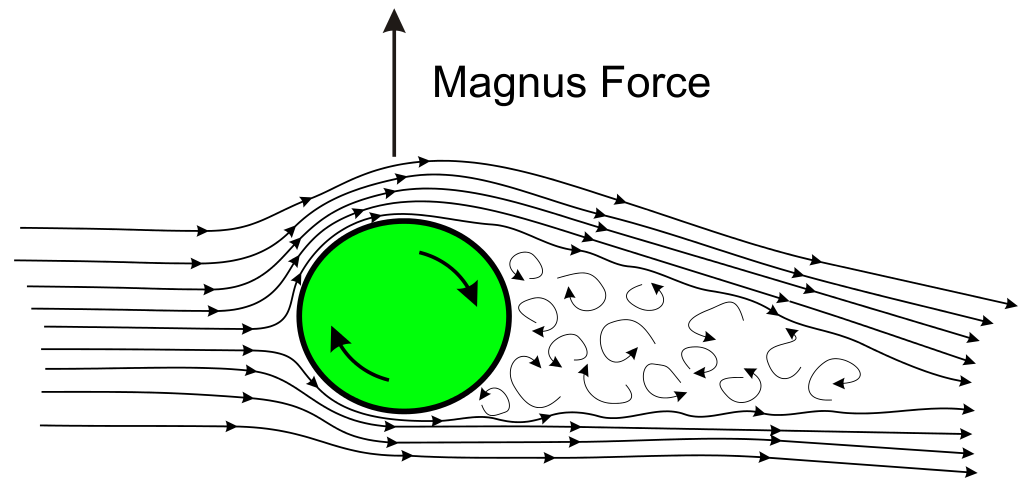If you watch the top tennis players in the world you’ll realize that their balls curve in the air and bounce higher or lower than expected. The balls seem to fly very high from the net and yet, they still land smack in the court. How do they do this?
The secret is top spin. The ability to control how fast a ball spins when it leaves the racket has transformed the game of tennis. It has made the tennis game faster and more demanding than ever.
But how exactly are players able to make the ball move through the air like that? What is the physics behind it?

The physics of tennis ball spin explained
The physics behind top spin may seem complex but it is very straight forward.
An object moving through the air, in this case a tennis ball, should ideally move on a straight line path. When the ball makes contact with the racket at an extreme angle, a spin is introduced and it creates a force that makes it curve away from its straight-line path. Scientist call this curving force the Magnus force, after the German physicist who was the first person to describe it (on record).
The spinning ball drags the air around it as the ball spins forward after contact with the racket. As it spins, the friction between the ball and the air forces the air to move in the direction of the spin.

The spinning of a ball causes the drag forces at the top and bottom of the ball to be unequal. In the case of backspin (pictured), the drag at the bottom of the ball is greater than at the top of the ball because the tangential velocity of the bottom of the ball is in the same direction as the velocity of the ball’s trajectory. This means the bottom of the ball has a greater magnitude velocity relative to air around it than the rest of the ball, which results an increased drag force. it Similarly, the drag at the top of the ball is reduced since the top of the ball has a lower velocity relative to the air around it than the rest of the ball.
These drag forces can be thought of as exerting a unequal pressure on the ball, with greater drag corresponding to greater pressure. The resulting pressure differential then causes a net force on the ball in the direction of the low pressure. In the case of backspin this results in an upward force on the ball, and for topspin this results in a downward force on the ball. This is similar to how an airfoil generates lift.
Advantages of using topspin
- It allows tennis players to hit the ball with a lot of horizontal velocity without the ball going out. (Landing past the boundary lines)
- Once the spinning ball lands on the tennis court, the spinning effect makes it move faster thus the opponent has less time to react to it.
- The ball tends to bounce higher than normal due to topspin which makes it harder for the opposing player to determine its trajectory thus it is a harder ball to hit.
To hit a ball with topspin, a player rotates the head of the racquet over the top of the ball during the hit. This exerts a torque about the center of the ball that causes the ball to rotate with a forward spin during its flight.
When a ball is hit in tennis, spin is often imparted on it to affect its trajectory and bounce. The three most common ways to hit a tennis ball are flat (no spin), with topspin, or sliced (hit with underspin/backspin). The type of spin put on the ball affects its trajectory in the air, as well as how it bounces. Depending on how the player hits the ball, it can travel with a top spin, it can be flat or it can have a backspin(Underspin).
Flat hit

A ball hit with no spin, also known as a flat hit, does not rotate with any significant angular velocity as it flies through the air. Thus it does not experience a Magnus force. The ball does however experience an ordinary drag force that acts in the direction opposite of its velocity.
Underspin (Backspin):

To hit a ball with underspin, or backspin, a player angles his racquet back and slides it underneath the ball when hitting it. This type of shot is called a slice. It exerts a torque about the center of the ball that causes the ball to rotate with a backward spin during its flight.
Slicing the ball allows the player to hit the ball to a precise location in the opponents court. However, due to the way slice shots are hit, if a player attempts to slice a ball that is moving to fast, or hit a slice shot too hard, he or she can easily hit the ball out of bounds.


